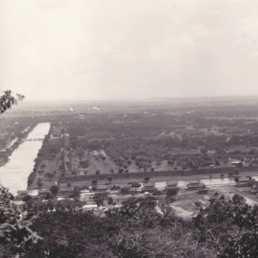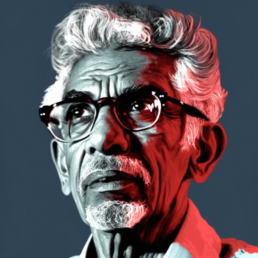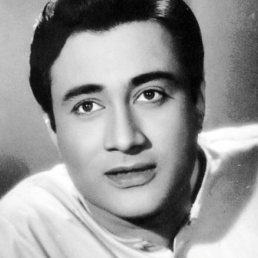In 1938, Adolf Hitler was utterly captivated by an Indian acrobatic rope dancer who he dubbed “The Jumping Devil.” However, little is known about the iconoclastic teacher from Thalassery who taught “The Jumping Devil” his awe-inspiring circus tricks.
Born in 1907 in Tellicherry (now Thalassery), which lies on the Malabar coast of Kerala, N.P. Kunchikannan, fondly known as Kunchy, was a legendary acrobat who ruled the bouncing ropes during the interwar period. He was widely regarded as the best in the world.
Based on Dominique Jando’s detailed account, in 1922, at the Whiteway Circus, Kunchy astounded audiences with his mastery of this incredible trick. But this was no novice act – Kunchy had perfected his technique since childhood, practicing on ropes made of coconut strands.
Soon enough, the wonder boy from Kerala caught the eye of the Canestrelli clan, an esteemed circus family visiting from Italy. Kunchy, propelled by fate, took the bold decision to embark on a global adventure with them. Destiny beckoned and he answered the call.
They transformed Kunchy completely – a new look, new equipment, and a fresh identity: Kannan Bombayo. Kunchy had matured into a man, but who would have thought this unassuming figure would go on to mesmerize the West with his magnetic showmanship.
Kunchy, now known as Kannan Bombayo, burst onto the American stage with an epic mid-air somersault that left audiences spellbound. From winning over American hearts, to captivating high society in London, Bombayo was an unrivaled superstar.
There was simply nobody else like him. As fate would have it, Bombayo found himself smitten with his fellow performer, Filomena Lentini, hailing from Naples. In love, they tied the knot in Texas and together they became an unstoppable duo in the world of entertainment.
Bombayo’s daredevil rope dancing was elevated to new heights with the addition of his saree-clad Italian wife as his assistant, captivating audiences far and wide. Their act was the talk of the town, with the awe-inspiring performances drawing in throngs of spectators.
However, a disaster loomed on the horizon. In the midst of a captivating performance in the US, Bombayo suffered a devastating tumble while executing a death-defying double somersault on the tightrope, leaving him in a precarious state.
He was left forever scarred by the accident. But fate intervened when he landed a performance at the illustrious WinterGarten in Nazi Berlin. And who was in attendance that fateful night? The notorious Adolf Hitler himself.
Legend has it, Hitler was utterly blown away by the death-defying stunt Bombayo pulled off from a staggering 40 feet above the ground. So much so, that he even went as far as to inspect his shoes for any hidden springs, and dubbed him “The Jumping Devil from India.”
Next year, in a heart-wrenching turn of events, the shining star from Kerala met an untimely demise at just 32 years old while en route to India. His devoted wife, Filomena, vowed to lay him to rest in his motherland.
Upon arriving in Bombay, as penned down by Ottavio Gesmundo in his memoir, she was greeted by a stunning scene – the docks overflowed with people eager to pay tribute to the prodigal son from Kerala. They were there to celebrate his heroic return.
Amidst the crowd, Filomena spotted a lanky, old man whom her late husband had spoken of with great reverence. With tears streaming down her face, she delivered the devastating news to him. The man was Kannan’s teacher, Keeleri Kunhikannan.
With a heavy heart, the teacher gave Filomena a warm embrace before carrying out the final rites of his cherished nephew and beloved student, Kannan Bombayo. Honoring both Hindu and Christian traditions, he cremated Kannan’s body and laid his ashes to rest.
In fact, without his exceptional mentor Keeleri Kunhikannan, Kannan’s mesmerizing talent would have remained unknown to the world. It was Kunhikannan, who by founding a circus school in his hometown, established a vibrant circus tradition that paved the way for Kannan’s future success.
Kannan wasn’t the only student – there were countless others. Nisha PR’s book is a mesmerizing account of how Keeleri Kunhikannan transformed Kerala into a thriving hub for performance artists, earning him the title of the “father of Indian circus.”
He was an avid supporter of India’s indigenous physical sports and a master of Kalaripayattu, a form of martial arts originating in Kerala. However, he was dismayed to discover that caste-based limitations were hindering the practice of this art form in Kerala.
Determined to break down these rigid barriers, Keeleri Kunhikannan transformed the previously segregated and caste-based circus culture into a dynamic and inclusive one, where people from all castes and communities, irrespective of gender, could come together and train as one.
Keeleri Kunhikannan’s powerful vision and unwavering dedication brought about a revolution in the world of circus artistry; inspiring a new generation of performers and breaking down the walls of discrimination that had held back the sport for too long.
He was born into a privileged upper caste family in Thalassery, but he went against the grain by marrying into a lower caste family. His bold defiance of the rigid caste system resulted in his own people treating him as an outcast. He embraced Christianity in his later years.
Till the end, Keeleri Kunhikannan continued to fight against casteism, leaving behind a legacy of courage and conviction that lived on through his students, who, coming from all walks of life, continued to captivate the world with their performances. This is our Kerala Story.
Sources and Image Attributes:
- Dominique Jando, Kannan Bombayo, circopedia.org, http://www.circopedia.org/Kannan_Bombayo
- Nisha P.R, Jumbos and Jumping Devils – A Social History of Indian Circus, OUP India
- Ottavio Gesmundo, The Grand Gypsy – A Memoir, Lulu Publishing Services
- Sreedharan Champad, An Album of Indian Big Tops – History of Indian Circus, SBPRA




